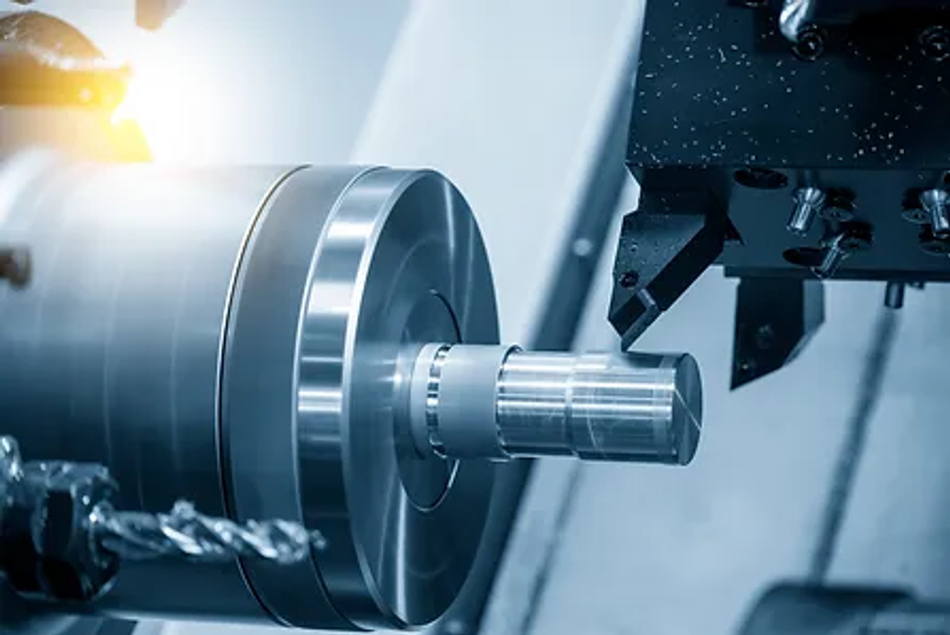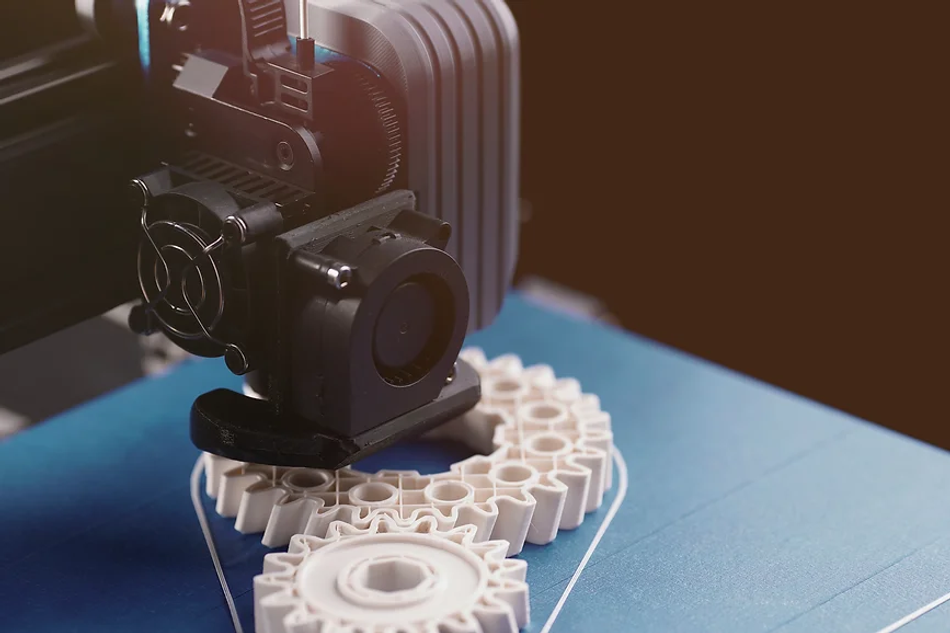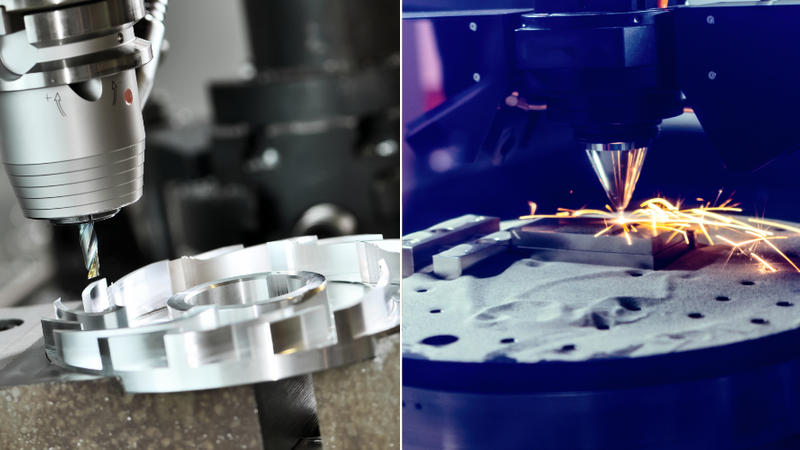CNC Machining vs 3D Printing: Which Technology to Use
CNC machining or 3D printing? Learn which manufacturing method is best for your project.
Companies need to stay ahead of the competition when it comes to manufacturing.
That doesn't mean simply adopting the latest and greatest manufacturing methods. Instead, it's about knowing exactly which technology to use for their projects. Currently, two of the most popular technologies on the MakerVerse platform are CNC machining and 3D printing (also known as Additive Manufacturing).
But which one is right for your project?
Before we dive into the details, there's an important fact to consider: CNC machining and 3D printing are not rivals. They're complementary technologies that can work together to help you achieve your manufacturing goals.
However, each technology has its strengths and weaknesses. Knowing when to use each one can be the key to success.
CNC Machining Advantages
Precision and Accuracy: CNC machines can produce parts with extremely high precision and accuracy (0.0015mm for a 6 mm diameter). These machines are programmed with very specific instructions, which they follow to the letter. This means that CNC machining is ideal for producing parts with tight tolerances and high accuracy.
Materials: CNC machining is a versatile technology that can work with various materials, including metals (like aluminum, steel, and titanium) and plastics (like ABS, PVC, and polycarbonate).
Speed: CNC machines can operate at very high speeds. This means that CNC machining is ideal for producing large quantities of parts quickly and efficiently. Furthermore, CNC machining is widely used as a conventional manufacturing process, so there's a high level of expertise surrounding the technology that helps with this speed.
 Milling is a CNC machining technology uses rotary tools to cut away at a workpiece.
Milling is a CNC machining technology uses rotary tools to cut away at a workpiece. 3D Printing Advantages
Flexibility and Customization: 3D printing is a highly flexible manufacturing technique that allows for customization and personalization of parts. You can quickly and easily produce parts without investing time and money in tooling or molds. This makes 3D printing especially popular for prototyping, as designs can be quickly and inexpensively tested.
Complex Geometries: 3D printing can produce parts that would be difficult or impossible to produce with other manufacturing techniques. This is because 3D printing builds parts layer by layer, allowing for intricate and complex designs.
Speed: While CNC machining is faster for larger production runs, 3D printing is typically faster for small production runs since tooling isn't required.
>>>Wondering which 3D printing technology and material is right for you? This interactive tool gives you the best technology/material combination.
 FDM is a popular, low-cost 3D printing technology for polymers.
FDM is a popular, low-cost 3D printing technology for polymers.CNC Machining vs 3D Printing: When to Use What
There's no one-size-fits-all solution in manufacturing. Depending on your part requirements, budget, and timeline, you may find that CNC machining or 3D printing is the best choice. Here are some factors to consider:
Cost Differences
3D printing is often more cost-effective for parts involving complex geometries. If the parts aren't too complex, CNC machining may be the less expensive option. If your part requires expensive materials, then a significant advantage of 3D printing is that unused materials can often be recycled for future production, which reduces costs.
Precision
CNC machining is known for its precision and accuracy, but it can take longer to produce parts, especially for complex geometries. 3D printing, on the other hand, can make parts that may not be as precise or accurate as CNC machining. Consider your timeline and part requirements when deciding between the two.
Material Properties
CNC machining can handle various materials, including metals and plastics, making it ideal for parts that require strength and durability. Consider the properties of your material when deciding which technology to use.
While CNC Machining is often preferred for working with metals, metal 3D printing technologies such as Laser Powder Bed Fusion and Wire Arc Additive Manufacturing are becoming increasingly popular as the technologies improve .
Part Size and Complexity
For large parts, CNC machining is often the best choice.
How large are we talking? With MakerVerse, it's possible to source CNC machined parts measuring 12 meters in the longest dimension.
CNC machining can produce parts with tight tolerances and better ensure consistency across large production runs. 3D printing, on the other hand, is better suited for smaller, intricate parts with complex geometries.
Choosing the Right Technology
So, when should you use CNC machining, and when should you use 3D printing? Here are some general guidelines, but of course every application is different.
When to Use CNC Machining:
Large production runs
Parts with strict tolerances and requiring high levels of precision
Parts requiring diverse materials, including non-standard materials
When to Use 3D printing:
Small production runs
Parts with complex geometries and shapes
Prototyping and experimentation
Getting Started with 3D Printing and CNC Machining
Of course, every project is unique, and there may be situations where a hybrid approach or a different manufacturing technique is the best choice. It's quite common for CNC machining to be used as a post-processing technique for 3D printing metal parts.
The key is to work with experts who can help guide you through the process and ensure that your parts are produced quickly, accurately, and cost-effectively. At MakerVerse, that's exactly what we provide. Our platform offers a full range of 3D printing and CNC machine technologies with guaranteed industrial quality.
